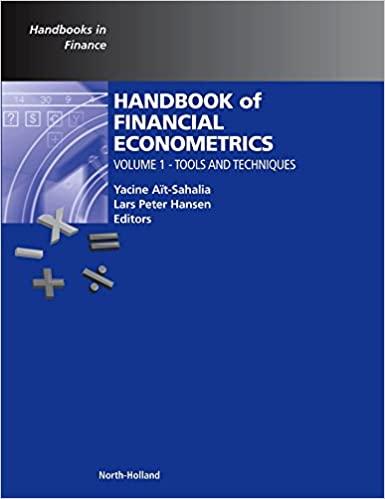What is the (risk-neutral) expected life for the employee stock option in Example 16.2? What is the value of the option obtained by using this expected life in Black-Scholes-Merton?

360 CHAPTER 16 a= Example 16.2 Suppose a company grants stock options that last 8 years and vest after 3 years. The stock price and strike price are both $40. The stock price volatility is 30%, the risk-free rate is 5%, and the company pays no dividends. Figure 16.1 shows how a four-step tree could be used to value the option. (This is for illustration; in practice more time steps would be used.) In this case, o =0.3. Af = 2, and r=0.05, so that, with the notation of Chapter 13. a = 20.05x2 = 1.1052, u = 20.372 = 1.5285, d=1/u=0.6543, and p = (a - d)/(u - d) = 0.5158. The probability on the up branches" is 0.5158 and the probability on the "down branches" is 0.4842. There are three nodes where early exercise could be desirable: D, G, and H. (The option has not vested at node B and is not in the money at the other nodes prior to maturity. We assume that the probabilities that the holder will choose to exercise at nodes D, G, and H (conditional on no earlier exercise) have been estimated as 40%, 80%, and 30%, respectively. We suppose that the probability of an employee leaving the company during each time step is 5%. (This corresponds to an em- ployee turnover rate of approximately 2.5% per year.) For the purposes of the calculation, it is assumed that employees always leave at the end of a time period. If an employee leaves the company before an option has vested or when the option is out of the money, the option is forfeited. In other cases the option must be exercised immediately, 360 CHAPTER 16 a= Example 16.2 Suppose a company grants stock options that last 8 years and vest after 3 years. The stock price and strike price are both $40. The stock price volatility is 30%, the risk-free rate is 5%, and the company pays no dividends. Figure 16.1 shows how a four-step tree could be used to value the option. (This is for illustration; in practice more time steps would be used.) In this case, o =0.3. Af = 2, and r=0.05, so that, with the notation of Chapter 13. a = 20.05x2 = 1.1052, u = 20.372 = 1.5285, d=1/u=0.6543, and p = (a - d)/(u - d) = 0.5158. The probability on the up branches" is 0.5158 and the probability on the "down branches" is 0.4842. There are three nodes where early exercise could be desirable: D, G, and H. (The option has not vested at node B and is not in the money at the other nodes prior to maturity. We assume that the probabilities that the holder will choose to exercise at nodes D, G, and H (conditional on no earlier exercise) have been estimated as 40%, 80%, and 30%, respectively. We suppose that the probability of an employee leaving the company during each time step is 5%. (This corresponds to an em- ployee turnover rate of approximately 2.5% per year.) For the purposes of the calculation, it is assumed that employees always leave at the end of a time period. If an employee leaves the company before an option has vested or when the option is out of the money, the option is forfeited. In other cases the option must be exercised immediately







